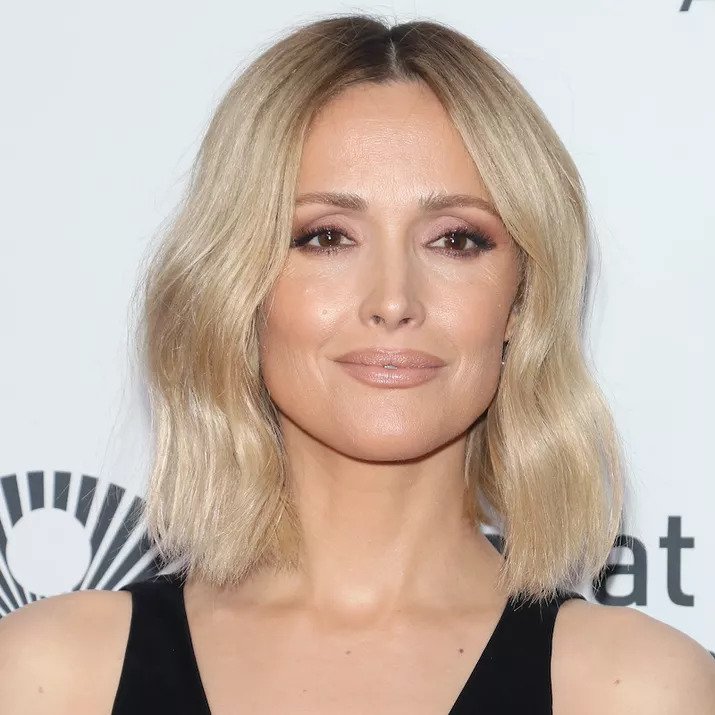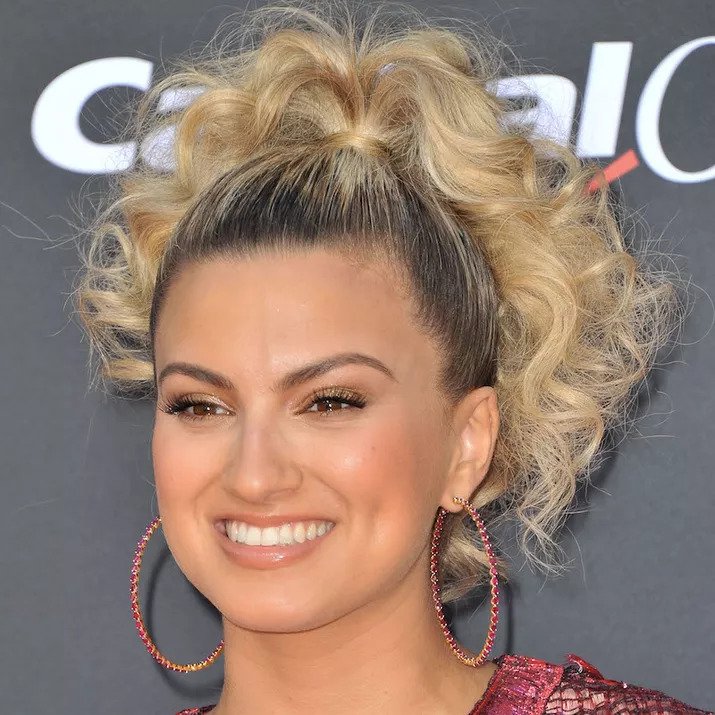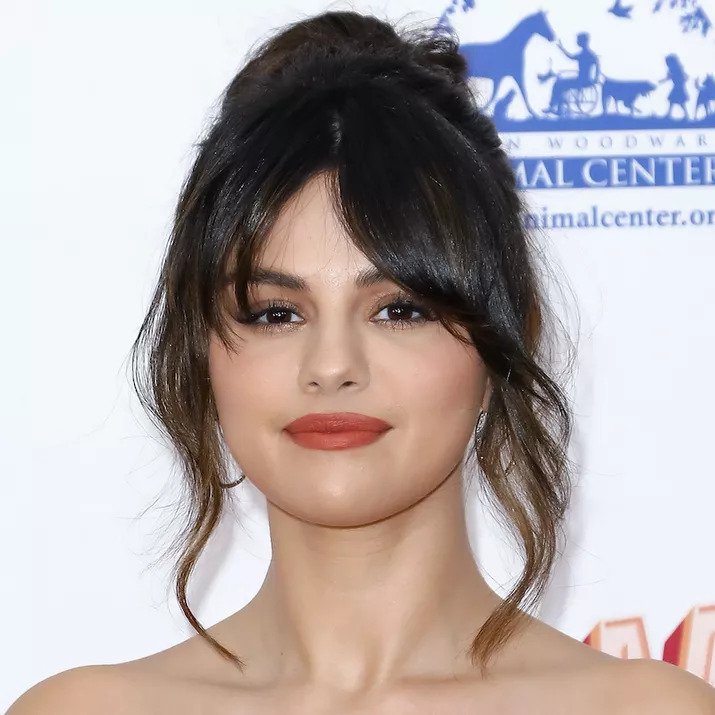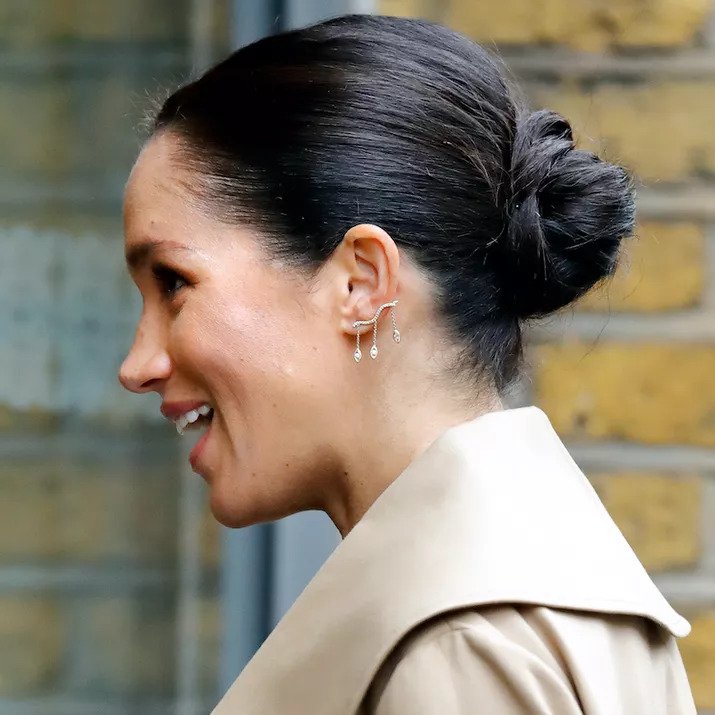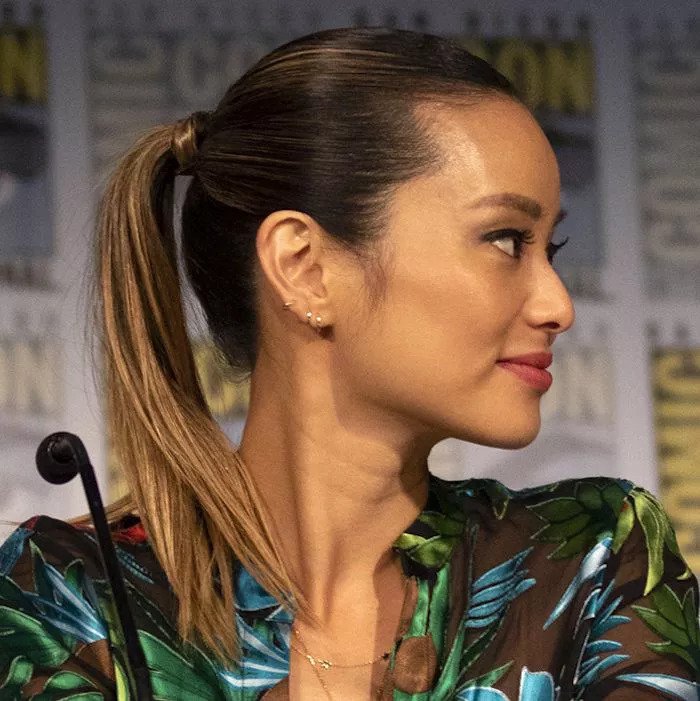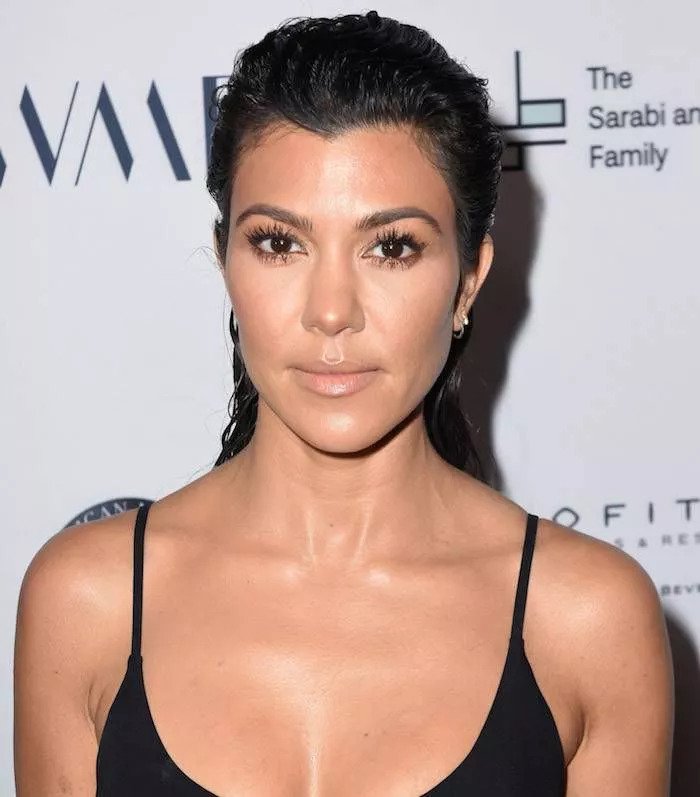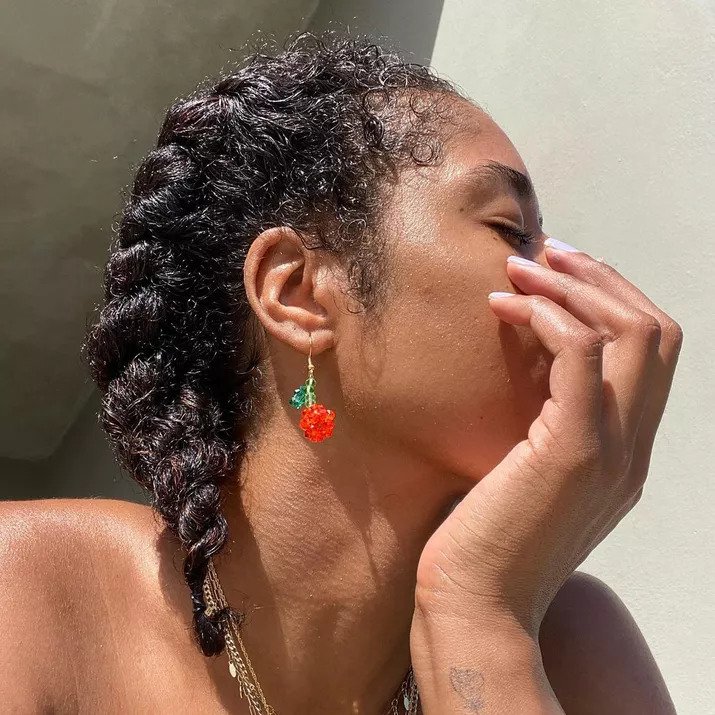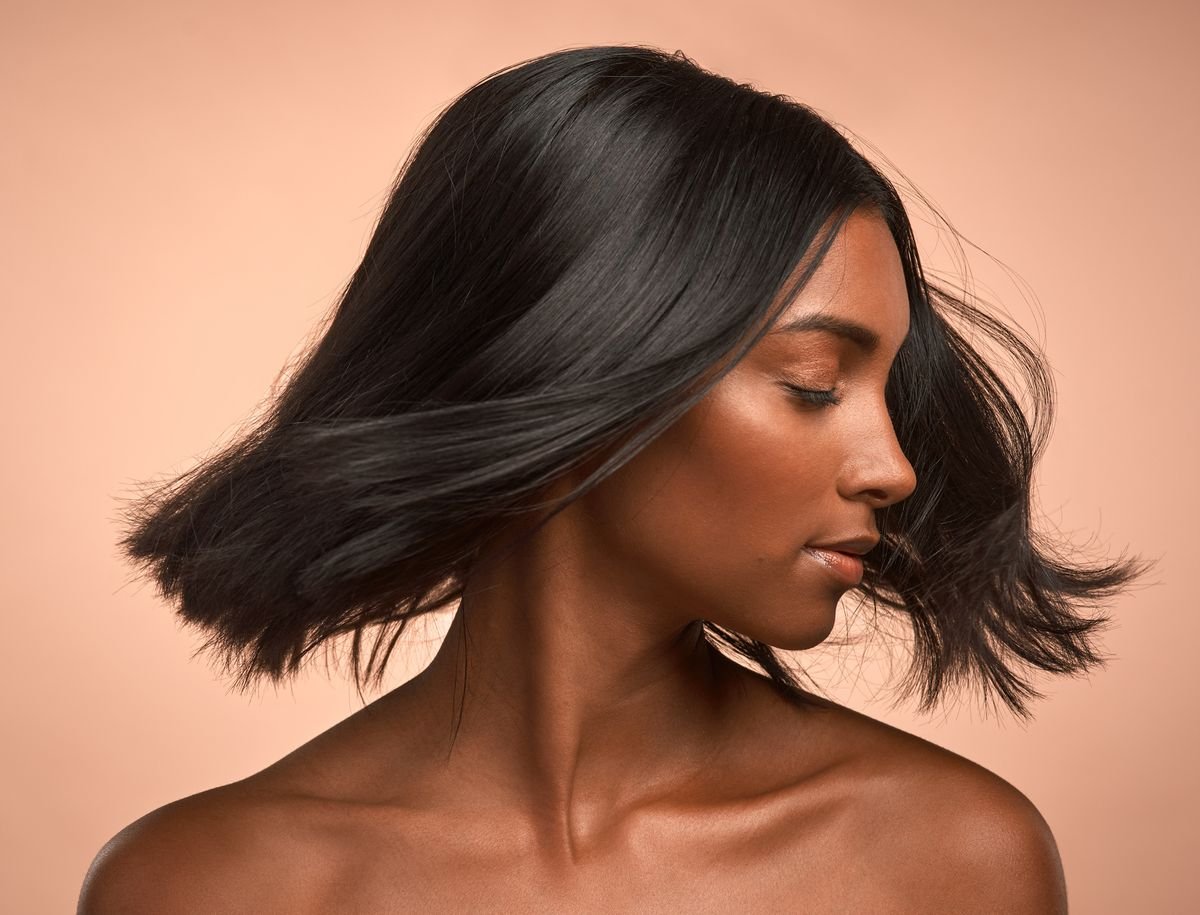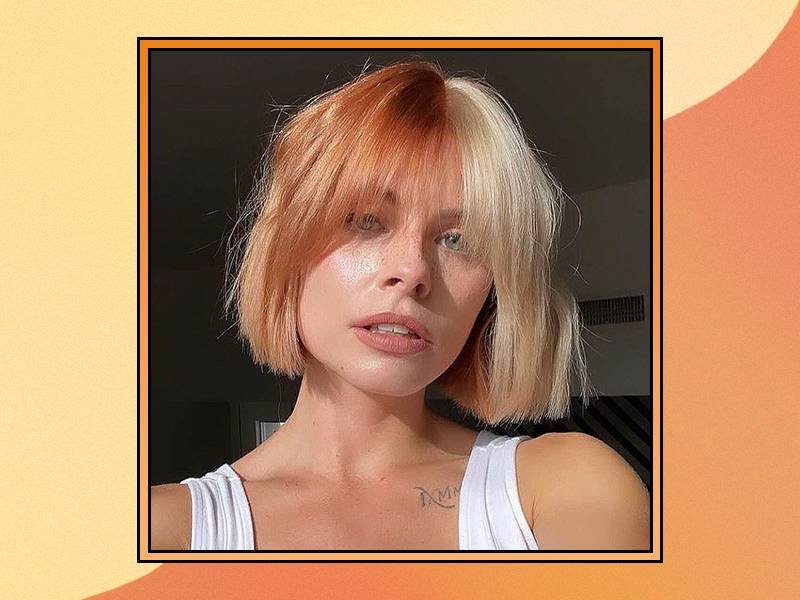35 Honestly Easy Hairstyles for Medium-Length Hair
Just in time for warmer weather, here’s a whopping list of 35 easy peasy updos (and some let-it-all-hang-out dos) to transform your daily routine — with tutorials and tips galore from yours truly and a host of other talented hairstylists. Get in here!
Originally published @ Byrdie | March 22, 2022 by Kaitlyn McClintock
Medium-length hair is full of fun opportunities when it comes to hairstyles. You can do an intriguing braid, bedhead curls, or even a no-fuss bun. If you, like many, are stuck in a rut and are bored with your hairstyle (or lack thereof), we're here to help with some major hair inspo.
For those who are short on time and motivation in the mornings, these hairstyles are easy to achieve with our step-by-step tutorials. We tapped some of our favorite hair experts to share their go-to hairstyles for medium-length hair to help you look polished on those days when you're tired of your usual style—and are looking to add a little pizazz to your look.
From hairstyles that require a few well-placed curls or a different way to part your hair that transforms your look, let us show you how versatile medium-length hair can really be.
Keep scrolling for 35 easy hairstyles for medium-length hair.
FAQs
〰️
FAQs 〰️
How do I cut layers in medium-length hair myself?
There are tons of tutorials online on how to cut layers into medium-length hair at home, but unless you're a trained cosmetologist, we recommend going to a professional for the best look possible.
Can I start locs with medium-length hair?
Long story short—yes. Depending on what method you are using to start your locs (two-strand twists, comb coils, braids, etc.), longer hair might be easier to loc than hair on the shorter side.
You May Never Recover From Seeing Zendaya’s Impossibly Bouncy Blowout
Learn how to recapture Zendaya’s gravity-defying ultra blowout with Jonathan Comlombini’s expert tips and all the products to shop to get it just right.
She *is* the moment.
She *is* the moment.
Originally published @ TZR |
Ever since their relationship became official, Zendaya and Tom Holland always seem to cause a stir when they step out together. Whether it’s an unexpected hand placement or sneaky kisses in the car, fans truly cannot get enough of their interactions, most likely because of how undeniably stunning they are together. Their most recent date night, however, was perhaps the best they’ve ever looked — and Zendaya’s bouncy ‘90s blowout is certainly pulling most of the weight (sorry, Tom).
On Wednesday night Feb.16, the couple was spotted in New York City on their way to a screening for Holland’s new film, Uncharted. Presumably because of the occasion, the pair were a little more dressed up than their typical outings; Holland wore a light gray suit with a black turtleneck while Zendaya channeled a ‘90s supermodel look in a belted black shirt dress and black sheer tights, her gloriously glossy hair bouncing with each step.
Her shoulder-length auburn locks are so voluminous they practically defy gravity, leaving fans on social media buzzing as the paparazzi photos continue to circulate. Jonathan Colombini, L’Oréal Paris celebrity hairstylist and colorist, dubs Zendaya’s hair “the ultimate ‘90s supermodel off-duty blowout.”
Gotham/GC Images/Getty Images
In a press email, Colombini shares his best tips for recreating the look.
“This style is best achieved with a classic round brush blow-dry, using a blow-dry primer with fantastic memory like L’Oréal Paris Advanced Hairstyles Blow Dry Primer.
Keeping the hair’s elasticity and not using a curling iron will give the bounce and volume. Hair color always looks its best when it’s styled at its best. For a color refresh, I recommend using the EverPure Glossing Collection with the glaze for ultimate shine and seal, followed by the Le Color Gloss for high conditioning and effortless color toning.
”
Below, shop Colombini's picks and have a go at one of Zendaya’s most jaw-dropping hair moments to date; Spiderman boyfriend not included.
EverPure Sulfate-Free Glossing Shampoo
Sulfate-Free Glossing In Shower Acidic Glaze
Sulfate-Free Glossing Conditioner
Le Color Gloss
Soin Acide Chroma Gloss Hair Gloss
The Best Products For Blowouts, According To Pro Hair Stylists
Achieving a salon-worthy blowout at home is easier said than done, but one thing is for sure: it all comes down to using the right products. But with literally thousands of styling sprays, blow-dry creams, and leave-in serums on the market, how does one even know where to start?
We’ve narrowed down the best blowout products for doing your hair at home — so come on in!
Originally published @ Bustle |
Experts explain how to get beautiful bouncy curls.
Achieving a salon-worthy blowout at home is easier said than done, but one thing is for sure: it all comes down to using the right products. But with literally thousands of styling sprays, blow-dry creams, and leave-in serums on the market, how does one even know where to start? To narrow down the best blowout products for doing your hair at home, Bustle spoke with five top professional stylists — ahead, they share their tips and tricks.
"There is no doubt that the best blowout is going to start right from your beginning prep —starting with your shower. Just as you wouldn’t spend the time doing full eye makeup without an eye primer, your blowout won’t set properly if you don’t prime from the very start as well," Ali Anger, an Amika Pro Educator, tells Bustle. Choose a shampoo and conditioner that works with your hair type to provide volume, vitality, and shine.
Then use a leave-in product, like a smoothing serum or cream, to protect your hair from heat damage and restore any moisture that was lost during the cleansing process. "Remember: You don’t need a lot [of product]! Less is more when it comes to a lasting blowout," advises Jonathan Colombini, a L’Oréal celebrity hairstylist and colorist. Colombini also suggests investing in a really good round brush. Finally, finish off with a shine-boosting serum or hairspray to set your style.
Below, you'll find even more blow-drying tips from our experts, plus eight of the best blowout products that they swear by.
1. Best Shampoo & Conditioner For Dry, Thick, Or Curly Hair
You might have heard that you should wait until your hair is 80 percent air-dried before applying heat; however, when it comes to diffusing curly hair, this isn't the case. According to Jonathan Colombini, a celebrity hairstylist for L'Oréal Paris, it's best to keep your hair as wet as possible before diffusing to help eliminate frizz. We're talking dripping-wet hair.
If you need to dry your wet hair just a bit, Michael Dueñas, a celebrity hairstylist and consulting creative director, says you can scrunch it a couple of times with a micro-fiber towel to soak up some of the water, but remember to be gentle. "I see some clients roughly drying their hair with a towel and being abrasive with it, which will stretch your curls and create more frizz," he says.
Additionally, to help enhance your curls, Colombini says you can mold your curls by wrapping them around your index finger to create a tendril. "This will later be broken up once completely dry," he says.
“I recommend amika’s Velveteen Dream Smoothing Shampoo and Conditioner to smoothen out thick, frizzy hair. I’m all about priming and then layering. Creating a base will guarantee that your blowout will slay all day. Use the best shampoo and conditioner for your hair type and then layer with your other favorite volume products."
— Ali Anger, amika Pro Educator
2. Best Shampoo & Conditioner For Fine, Thin, Or Limp Hair
Anger recommends amika's 3D Volume Plus Thickening Shampoo and Conditioner to "pre-boost finer, limp tresses." Both the shampoo and conditioner help promote the appearance of thicker, fuller hair both immediately and over time, while also offering moisturizing and detangling benefits. Like all amika products, these are sulfate-free and safe for color-treated hair.
3. Best Leave-In Conditioner & Blowout Cream
“I absolutely love UNITE Hair’s 7SECONDS Leave-In Conditioner. This is a great prep right out of the shower, followed up by the 7SECONDS BlowOut Creme to give you a blow-dry that can last two to three days. This combination before a blow-dry is mandatory."
— Graham Nation, UNITE Hair ambassador and celebrity stylist
4. Best Priming Spray & Smoothing Serum
“Blow Dry it Quick Dry Primer Spray mixed with Elvive Dream Lengths Frizz Killer Serum is an amazing cocktail that I use on all my clients to get the perfect, smooth blowout. It has heat protection and makes the hair soft and silky without weighing it down. I use a quarter-size amount of the smoothing cream and three pumps of the smoothing serum; run that through the mids and ends and use the rest of the product to smooth down hairline flyaways. [While blow-drying] use clips to section off your hair for better control. It’s easier if you rough-dry your hair first before starting the round brush process.”
— Jonathan Colombini, L’Oréal Paris celebrity hairstylist and colorist
5. Best Blow Dry Cream
“This leave-in cream provides heat protection, easy glide for fast blowouts, instantly smooths hair, and controls frizz. If your hair tends to frizz or is naturally curly, then you’ll want to have your hair fairly damp [when you dry your hair]. This will allow the heat from the blow dryer to manipulate the hair into a smoother blowout. To get a smooth blowout, it's important to go section by section, applying the heat in the direction of the ends of the hair so that it can seal the cuticle. If you point the nozzle towards your scalp, then you’re opening the cuticle, which will leave you with a rough blowout. On the other hand, if your hair tends to be fine and flat, then rough drying first upside down to get most of the moisture out and then round brushing will give you maximum volume.”
— George Papanikolas, MATRIX celebrity colorist
6. Best Serum For Shine
“When trying to achieve the best at-home blowout, preparation is key. As someone that works on a lot of curly hair, I understand that layering products as well as maintaining moisture and protection of the hair is vital. I’d start with the MATRIX Total Results Mega Sleek Shampoo and conditioner, then use a leave-in cream to dry hair and finish with MATRIX Total Results Mega Sleek Mega Varnish to add intense shine and build on the benefits I received from the cream.”
— Michelle O’Connor, MATRIX Artistic Director
Experts:
Ali Anger, amika Pro Educator
Jonathan Colombini, L’Oréal Paris celebrity hairstylist and colorist
Graham Nation, UNITE Hair ambassador and celebrity stylist
Michelle O’Connor, MATRIX Artistic Director
George Papanikolas, MATRIX celebrity colorist
Jonathan Colombini Explains How To Recreate Meghan Markle’s Tousled Hairstyle With a $13 Hairspray
2021 may have been the year that Meghan Markle landed a spot on Time Magazine's list of "100 Most Influential People," but her beauty routine has been influencing us for nearly half a decade. In 2017, her Charlotte Tilbury wedding lipstick caused nude lipstick sales to soar.
Originally published @ Well & Good | by Zoe Weiner・
2021 may have been the year that Meghan Markle landed a spot on Time Magazine's list of "100 Most Influential People," but her beauty routine has been influencing us for nearly half a decade. In 2017, her Charlotte Tilbury wedding lipstick caused nude lipstick sales to soar. According to an analytical report by the beauty experts at RY, to date, there have been 88.5 million articles written about her hair, makeup, and skin-care secrets (which, it's worth noting, is 10 million more than Kim Kardashian), making hers the most widely covered regimen in the world. So it's no surprise that I took one look at the elegant waves she's wearing on the Time cover and just had to know: How did she get her hair to look like that.
L’Oreal Paris Elnett Hairspray runs about $13.00
How to recreate Markle's hairstyle
To find out, I asked L'Oréal Paris celebrity hairstylist Jonathan Colombini, who told me that copying her tousled, textured look is easier than you might expect. "This style requires some texture and grit," he says, which means you may not want to try it on the day that you wash your hair.
1. Start with a boar bristle round brush, and use it to blow dry your hair out without any volumizing products, which Colombini says will help "recreate movement."
2. Next section your hair in quadrants—two in the back from the center of your hairline down to the nape of your neck, and two in the front from your crown toward each ear—then break those quadrants down into smaller sections.
3. Wrap these individual sections around a 2-inch curling barrel, allowing the ends to stick out, and continue rotating the iron in the same direction that the hair is wrapped.
4. To finish things off, use a strong-hold, shine-inducing hairspray, like L’Oreal Paris Elnett Hairspray ($13), to lock in the look.
5. Et voila—with a few twists of an iron and a $13 spritz, your hair can be cover-ready, too.
5 Common Mistakes to Avoid When Diffusing Curly Hair
Experts explain how to get beautiful bouncy curls.
Curly hair types know the constant trial-and-error of testing products and techniques to make their hair look defined and healthy. Not to mention, because curly and coily hair textures tend to be drier than others, frizz is also a challenge.
Originally published @ RealSimple.com |
Experts explain how to get beautiful bouncy curls.
Curly hair types know the constant trial-and-error of testing products and techniques to make their hair look defined and healthy. Not to mention, because curly and coily hair textures tend to be drier than others, frizz is also a challenge. If you're someone who loves to embrace their natural texture, then chances are you've used a diffuser at one point or another — or for some, every time you wash your hair.
A diffuser is a plastic attachment that you can add to your hairdryer that helps dry the hair while keeping the natural curl pattern. It's a game-changer when it comes to heat-styling curly hair. That said, if you aren't diffusing your hair correctly, you can end up with frizzy and undefined hair.
Turns out, when it comes to using a diffuser, there are a lot of common mistakes that people make leading to these undesired results. So, what's the right way to diffuse curly hair to get those bouncy, beautiful curls all of the time? Here, we spoke with three celebrity hairstylists to help steer us straight from these five common mistakes made when diffusing curly hair.
1 — Your hair isn't wet enough
You might have heard that you should wait until your hair is 80 percent air-dried before applying heat; however, when it comes to diffusing curly hair, this isn't the case. According to Jonathan Colombini, a celebrity hairstylist for L'Oréal Paris, it's best to keep your hair as wet as possible before diffusing to help eliminate frizz. We're talking dripping-wet hair.
If you need to dry your wet hair just a bit, Michael Dueñas, a celebrity hairstylist and consulting creative director, says you can scrunch it a couple of times with a micro-fiber towel to soak up some of the water, but remember to be gentle. "I see some clients roughly drying their hair with a towel and being abrasive with it, which will stretch your curls and create more frizz," he says.
Additionally, to help enhance your curls, Colombini says you can mold your curls by wrapping them around your index finger to create a tendril. "This will later be broken up once completely dry," he says.
2 You're not applying enough product
In addition to sopping-wet hair, you should also completely saturate your curls with the right product to ensure smooth, defined results. Find products that offer moisture and control, says Colombini. He recommends using the L'Oréal Paris Elvive Dream Lengths Shampoo ($4, target.com) and Conditioner ($5, target.com) in the shower.
Once you're out of the shower, prep with your favorite styling product and leave-in conditioner. The Ouidad Curl Reboot Nourish and Strength Leave-in Mask is also a great leave-in option for curly hair types ($38, nordstrom.com) that will nourish and soften your hair. Apply enough product so that when you scrunch your hair, you can hear a squishy noise. That will indicate your hair is wet and moisturized enough for diffusing.
3 You aren't using a low enough setting
One of the biggest culprits of getting frizzy hair post-diffuser is not using your hairdryer on the lowest heat and pressure setting. "Be patient when diffusing your hair," says Colombini. "Low heat and low pressure are the best, which create for a longer styling process, but it's worth it!"
4 You're moving the diffuser too much
"Bouncing the diffuser around and constantly moving it creates frizz," says Dueñas. The best way to dry your hair is to keep the diffuser in place and flip your hair to the section you want to dry. "You want to tilt your head to the side and back, or upside down and hold the diffuser in one spot as close to your scalp as you can without burning yourself," he says. "Leave the diffuser in that one location until the section is completely dry, then move to the next section."
The exception to this rule is for those with tighter curl patterns. "On textured, tight coils, set your hair where you would like it to live and move the diffuser around your head without touching your hair," says Dueñas. Do this until your hair is completely dry.
5 You're touching your hair
Finally, and most importantly, touching your hair at any point throughout the diffusing process will make your hair frizzy. As difficult as it can be to leave your hair alone, it's best to not touch your hair until it is fully dry. And even then, try not to touch it unless your hair feels crunchy or hard.
"Once your hair is completely dry, scrunch it gently with your hands by gathering the hair from the ends to the root gently in your palm," says Colombini. "Then, gently squeeze and open your hand, do not rub your fingers together, but a gentle compression as this will break up the cast that any product has left on your hair." Never rack your fingers through your curls because that will break up the curl pattern and create frizz.
These tips are sure to help keep your curls looking fresh, beautiful, and defined next time you diffuse your hair.
13 Stylist-Approved Tips to Perfect Your Hair-Care Routine
We all want our hair-care routine to help our hair live its best life—whether that means shiny, bouncy curls; full, non-broken strands; or glorious natural hair. And great hair starts with having a personalized hair-care routine. Think of it like a basic set of principles you use to take care of your hair each day and/or night, customizable for your hair type and goals. If you’re thinking wait, I don’t have one of those, don’t worry! It’s not like you’re born knowing how to take care of your hair! For most people, it takes a little trial and error to figure out the best hair-care routine since there’s no universal approach that works for every hair type, texture, length, or style. But if you really want to know how to get healthy hair, ask the pros.
Originally published November 1, 2021 by and for Self
Get the best hair of your life by avoiding these common mistakes.
〰️
Get the best hair of your life by avoiding these common mistakes. 〰️
We all want our hair-care routine to help our hair live its best life—whether that means shiny, bouncy curls; full, non-broken strands; or glorious natural hair. And great hair starts with having a personalized hair-care routine. Think of it like a basic set of principles you use to take care of your hair each day and/or night, customizable for your hair type and goals. If you’re thinking wait, I don’t have one of those, don’t worry! It’s not like you’re born knowing how to take care of your hair! For most people, it takes a little trial and error to figure out the best hair-care routine since there’s no universal approach that works for every hair type, texture, length, or style. But if you really want to know how to get healthy hair, ask the pros. Or have SELF do it for you. Below, we spoke to knowledgeable hairstylists and asked for their tips for healthy hair, how to nail down the best hair-care routine for your hair type and texture, and what kinds of mistakes can sabotage even the best hair-care intentions.
What should a hair-care routine include?
There are four main elements in most people’s hair-care routines, according to celebrity stylist Mia Santiago: cleansing, conditioning, heat-styling, and air-drying. This doesn’t mean your hair-care routine needs to have all of these components. For instance, you may never use heat on your hair. But since these are the mainstays of most people’s hair-care routines, we’re going to cover them all. And once you know the best hairstyling products and techniques for these processes, get ready for your dream hair to follow.
According to Santiago, the number of steps and the techniques you may need to follow in each of these components is based on hair type: thick, fine, or somewhere in-between (Santiago calls it “baseline”).
Cleansing: For all hair types, the goal of the cleansing should be scalp-centric. “Hair health starts at the scalp,” explains Santiago. “So it’s important to get it completely clean and clear of build-up.” For folks with fine hair, this isn’t usually too difficult, though Santiago recommends being sure to work the lather up past the nape of the neck as people often miss that spot. For those with thicker hair, wet it, then comb it out and split it into sections so that when you apply your shampoo—a hydrating one is always best—it’s able to penetrate the scalp.
How often should you wash? That depends on your hair texture as well—more on this later.
When it comes to products, texture again is key. Thicker-haired people should “use moisturizing products, and follow up with the hair oil of your choice,” says King Carter, a celebrity stylist who’s worked with Duckie Thot and Megan Thee Stallion. Those with finer hair should avoid oils and try to find a volumizing shampoo.
Conditioning: Always follow cleansing your hair with a conditioner to restore the moisture that shampooing strips away. For finer-haired folks, Santiago recommends applying conditioner from the ends to the tips of your hair, avoiding the roots where things can get greasy. For thicker hair, a good deep conditioner is a must. For people in that baseline category, pile on or scale back the conditioner based on how thirsty your hair gets.
Heat-styling: No matter what kind of hair you have, if you use hot styling tools (such as flat irons, diffusers, or curling irons), you need to be using some kind of thermal protection. (Here are heat protectants to try.) And make sure to follow other heat styling rules that will help protect your hair, like using the lowest heat possible to get the results you’re after. Or even air-drying! Which brings us to our next point.
Air-drying: It’s good to give your hair a break from heat too, but if you air-dry your hair, that doesn’t mean “just leave it alone.” If your hair is thicker, you’ll want to use a heavier product to lock in moisture and get the style you’re trying to achieve: Think thick creams and oil-infused gels. Finer hair needs a lighter product, like a mousse, to lift from the roots and add texture. Whatever products you reach for, don’t go back in and mess with it once the air-drying is complete if you’re trying to keep your hair looking a very specific way. “That can make it frizzy,” explains Priscilla Valles, a celebrity stylist who has worked with Megan Fox and Khloé Kardashian.
How do I keep my hair healthy with a daily hair-care routine?
On a day-to-day basis, you want to watch out for build-up: both from product and from the oil your scalp naturally produces says Santiago. These are signs it’s time for a wash day.
How often you wash your hair is ultimately up to you, although your hair type does come into play. “For those with coarser textures, I would recommend washing once a week,” says Carter, “whereas finer textures should wash every two or three days.” Factors like humidity, temperature, and how much you’re working up a sweat should also come into consideration, as an increase in moisture may signal a need to wash more often. Other signs your hair needs to be cleansed include if it gets too dry (for thicker hair) or too greasy (for finer hair/oily scalps).
One way to refresh between washes is to use dry shampoo—don’t fret, curly-haired friends, there are options out there for you too nowadays—to add shine and suck up oil. Or you can apply baby powder. “I love applying it before bed,” shares Santiago, “because the baby powder absorbs all the build-up while I sleep and my hair is so much bouncier in the morning.”
Some people love washing their hair at night and sleeping on it damp, but experts are a bit divided on whether it is bad to sleep with wet hair. Carter recommends against it, since “wet hair is more prone to breakage.” Santiago prefers to sleep on wet hair, though: She likes to shower in the evenings and sleeps using a microfiber towel pillow cover which dries your hair while you sleep and protects your pillow. Be warned: Folks with fine hair might find that their hair goes flat overnight, so test it to see if it works for you.
What are bad habits for your hair?
The texture of your hair should dictate your hair routine more than anything else. But there are still some habits that everyone, regardless of their hair type, should steer clear of. Obviously, no one is perfect, so no shame if these habits make an appearance in your own hair-care routine pretty often. These are just some general guidelines and tips for healthy hair.
1. Being reactive instead of proactive.
Don’t wait until you see something “wrong” to start really taking care of your hair. “A mistake some people make is obsessing with products while not committing to the day-to-day,” says Vernon François, who has worked with Lupita Nyong’o and Amandla Stenberg. By treating your hair routine as a habit—not just paying attention to it when you reach a state of mega-damage—you’ll be setting yourself up for infinite good hair days.
2. Yanking a brush through wet hair.
The detangling struggle is real, whether your hair is thin or thick, but that doesn’t mean you should be rough with it. According to Kelly Hunt, who has worked with Amber Valetta and Karina Smirnoff, “It’s not a good idea to brush wet hair with any old brush. A wide-tooth comb is a better bet, but my favorite is the Tangle Teezer ($11, Amazon). It’s shaped like a little foot and fits in your palm. It doesn’t pull or tug on the hair and can be used on any texture or length.”
3. Ignoring your hair at night.
You can multitask while you rest. “It’s a great time to use products like dry shampoo because they work while you’re asleep,” explains Santiago. On the flip side, don’t forget you can do damage while you sleep too. “Sleeping in a ponytail causes breakage right at the crown of the head, or wherever the elastic is placed. If you like your hair off your face, sleep in a loose braid off to the side, secured right at the end as loose as you can,” says Johnny Stuntz, who has worked with Anna Kendrick and Kelly Osbourne. If your goal is to keep your curls intact overnight, try sleeping in a satin bonnet or pineappling your hair with a satin scrunchie.
4. Not getting regular trims.
Even if you’re trying to grow out your hair, regular trims help keep your hair healthy. Michael Dueñas, who has worked with Padma Lakshmi and Zoe Levin, adds that regular trims can keep you from harming your hair by messing with its ends. “You wouldn't believe how many women I see pulling on their split ends,” he says. “You're actually shredding the hair, and creating a more uneven split end that’s harder to fix. Instead, snip it off with very sharp scissors.” And make an appointment to get a haircut ASAP. “Regular maintenance and professional haircuts actually promote hair growth,” says Carter.
5. Over-shampooing oily hair.
While it’s tempting to scrub a scalp that produces a lot of oil every day, it’s not the way to go, according to L’Oréal Paris creative director of Style & Color Jonathan Colombini, who has worked with Kim Kardashian and Kendall Jenner.
“Don’t shampoo your hair daily if it tends to get oily fast. This leads to excess oil production making it more oily and weighs it down. I recommend dry shampoo on non-wash days.”
Jonathan Colombini | Owner, John Henry Salon
6. Heat-styling unsafely.
It might seem counterintuitive (and inconvenient), but it’s technically best to do any heat styling when your hair is already dry. (This is why figuring out great air-drying techniques can be so handy!) “In order to use heat without damage, the hair has to be completely dry,” explains Bobby Eliot, who has worked with Hailee Steinfeld and Jena Malone. “Using heated styling tools when the hair is still wet literally fries the hair.” Another major bad habit is heat-styling many days in a row. This can be super damaging,” says Michelle Sultan, who has worked with Zendaya, Naomi Campbell, and Venus Williams, “and causes the hair to dehydrate resulting in brittle, damaged, and broken hair.” So try to heat style just once or twice per week, if possible. And, of course, don’t forget the heat protectant!
7. Detangling the wrong way.
Believe it or not, there is a right way to brush your hair: No matter what your hair texture is, you should start from the bottom up. "My biggest pet peeve is when people start at the root when brushing or combing. You can literally hear the hair breaking!” says Michael Long, who has worked with Lizzy Caplan and Alexandra Daddario. “Instead, start at the ends and remove the tangles there first. Then work your way up towards the root. That way, you’re reducing split ends and frizzy broken bits."
8. Applying product incorrectly.
The product’s instructions are there for a reason. “I constantly see my friends, family, and clients mist aerosol products like dry shampoo and hairspray, but with the can two inches from their heads,” says John D, who has worked with Amy Adams, Lea Michele, and Drew Barrymore. “Instead, give the can a good shake for better product distribution, then extend your spraying arm out all the way and spray away. Aerosol products work best when they’re exposed to air before they reach the head.”
9. Applying too much product.
Since scalp health is so vital to hair health, if you’re piling on the product, you may actually be making it harder for your hair to grow. “The whole point of washing your hair is to break down build-up,” explains Santiago. So keeping an eye on how much product you apply daily is important.
One product a lot of people overapply is dry shampoo. “If you use dry shampoo or texturizing spray more than twice a week, you’re likely dehydrating your scalp, which can make the hair weaker and more prone to breakage,” explains Sunnie Brook, who has worked with Katie Lowes and Anna Faris. If your hair starts to look weighed down or starts breaking, you’ll need to scale back. But what if you’re trying to minimize wash days and cut down on your dry-shampoo usage? In that case, reach for products to keep your hair strong and hydrated, like refreshing sprays. You can also try co-washing (washing your hair with only conditioner, some of which are formulated with cleansing properties that are gentler than shampoo and specifically meant for co-washing). This will accomplish the dual goals of breaking up build-up and restoring moisture.
10. Being rough when drying wet hair.
Overhandling your hair, especially when you step out of the shower, could be responsible for some of your least-loved hair qualities like dullness. “It drives me crazy when clients towel-dry their hair by messing it up in every direction,” shares Toni Chavez, who has worked with Bella Thorne and Nicola Peltz. “It roughs up the delicate cuticle.” This can lead to dryness and dullness. It’s best to towel dry hair gently, Chavez says, by wringing your hair out, moving downwards from root to ends.
11. Overmanipulating your hair.
Next time you notice your hair seems limp or dull, John Ruggiero, who has worked with Kate Beckinsale and Gigi Hadid, suggests swapping out a visit to your stylist with a little more TLC. "Try fewer washings, less heat styling and blow-drying, and more deep conditioning. Hair looks fuller when it’s healthier and stronger." Bottom line: The less you fuss with and manipulate your hair, the better.
12. Not considering products like extensions.
We can do a lot of damage to our hair trying to get it to look the way we want it to (you always want what you don’t have, right?). One option if you’re trying to grow your hair, or if you want more volume, is using extensions instead of chemicals or heat. “Fine hair clients stress their hair out with heat and products to make it appear thicker,” says Valles. “Extensions will actually be less stressful to your hair.”
13. Trying to force your hair to be something it’s not.
This is good advice for everyone, but especially for curly-haired folks and anyone struggling in the age of the Instagram hair-fluencer. “One thing I wish some people would stop doing is speaking about their hair negatively; unruly, misbehaving, and so on,” says François. “Our choice of language, how we speak about our hair’s texture, frames the relationship we have with it. It’s all interlinked with seeing, accepting, and embracing, the true beauty of the hair texture you were born with.”
That doesn’t mean you can’t experiment with new looks! But if you’re trying to heat and style your hair into submission to the point that you’re causing significant damage instead, it’s worth really exploring what kinds of styles might make you feel great without requiring so much manipulation. Remember, the goal is knowing how to take care of your hair so it’s as healthy and happy as possible.
The Best Texturizing Product, According to Kendall Jenner's Stylist
There's a handful of highly-coveted hairstylists in the world, and John Henry Salon owner Jonathan Colombini is one of them. From Kendall to Kylie, and a whole bunch of editorial work in between, Colombini has certainly done the rounds when it comes to high-profile styling.
Article originally published by Byrdie
There's a handful of highly-coveted hairstylists in the world, and Jonathan Colombini is one of them. From Kendall to Kylie, and a whole bunch of editorial work in between, Colombini has certainly done the rounds when it comes to high-profile styling. Which is exactly why we took the opportunity to ask him a barrage of questions on a recent trip to Sydney.
What's the number one hair trend going to be this year?
Flat iron waves. Loose, effortless, and super easy.
And the one trend that's over?
The beach wave. Also, ombre. The recession is over—get your roots touched up!
What are your current favorite styling products?
I'm a texture guy, so my top five would be the Sachajuan Ocean Mist ($31), David Mallet Lê Volume Spray ($40), Evo Casual Act Moulding Paste ($22), Oribe Dry Shampoo ($46), and Sachajuan Strong and Flexible Hairspray ($35).
And the single best product you've ever used?
That’s like asking a parent to choose their favorite child—it’s impossible. But if I HAD to choose Sachajuan Ocean Mist. It’s truly, exactly what your hair would do at the beach.
When you're working with a celebrity, do you collaborate on the look, or do they give you free rein?
I always pull my inspiration from the wardrobe. There will always be a piece that stands out to me, and I’ll know just what direction to go. So absolutely it's a collaboration.
What about Kendall's hair. Any tips on how to emulate her texture?
Kendall loves easy, natural, lived-in hair. I literally put some bends in with the tongs, use a texturizing mousse, and either a dry shampoo or some sort of paste on the ends.
How do you usually prep hair before styling?
For me, being into natural texture and not wanting to disturb that, I usually start with a volume or texture spray. I’ll rough dry it into the hair and really focus on smoothing out ends. I like a boar bristle brush. Once texture and structure are established, then my prep work is done.
What's your go-to wet weather style?
Hair and rain just don’t mix. You’re fooling yourself if you think any hairstyle can withstand a wet, miserable day. Make those days a hat day. I love a chic fedora on a woman.
What about bangs? What are your best styling tips?
It depends on the length, but fringes are best when they're clean and rough-dried by hand. If you have longer, Bridgette Bardot-style fringe, then the small round brush is best. Roll the fringe onto the brush, and blow dry from underneath. Smooth and continue to roll the brush through until it's dry. Once done, roll the fringe onto the brush, and set with a blast of cool air.
What's your blow-drier of choice?
Parlux Advance Light Dryer ($150) because it's super lightweight, gets hot enough, and is not too noisy (so I can keep a conversation with my clients).
Where do you look for inspo?
The runway. Paris and London fashion week have me shook this year!





